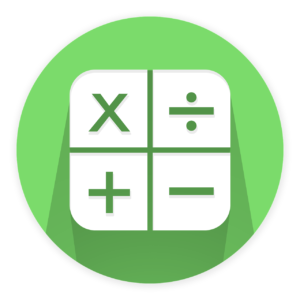August 1, 2018
Help Your Child Develop A Better Understanding of Math — 3 Major Topics All Teenagers Should Learn In High School Math
High school students learn best at their own pace, but that isn’t always possible when they’re thrown into a fast-paced math curriculum. As students work their way from algebra through calculus, they may begin to falter if the are missing fundamental knowledge about math. Math is all about building blocks, and if students want to develop a better understanding of math, it’s important that they feel confident applying past concepts to future problems.
That’s where a tutor comes in. You see, great math tutors are not only experts in the particulars of a subject – they’re trained to make sure high school students truly understand the concepts at a deeper level. The results are higher grades and even a spark of fun for students in high school math class.
Algebra, geometry, trigonometry and calculus are all unique in their own ways, and our tutors will help your high school student understand three major topics that are universal in all forms of math, and applicable to life after class.

Mathematics – Keep Reading To Learn The Three Skills Your Child Needs
Topic 1: A Better Understanding of Math: Relational Understanding
Did you know there are two types of understanding in math? Many students are adept at the first: instrumental understanding. They can take certain math rules and use them to solve problems – but they don’t necessarily know why the rule worked. This form of understanding relies on memorization more than application and can lead to struggles when problems become more complex.
The second form is relational understanding. Some may call it deductive reasoning. It necessitates a deeper understanding of rules, formulas and theorems so that students can continue to build on a solid foundation when things get harder. When students understand the why behind math, their worlds start to open up and they can make connections they may not have seen before.
Math tutors help with relational understanding because they have more time to work with students. In a classroom environment, students can begin to feel overwhelmed if they don’t fully grasp a concept, and fall behind as the class speeds on through to the next lesson. A student who understands the purpose behind math ideas and how to apply them to different concepts will be capable of solving any problem.
Topic 2: A Better Understanding of Math: Translating decimals, fractions and percentages
The entire course of algebra study hinges on understanding of decimals, fractions and percentages, and students need to be able to seamlessly transition between the three. But our brains don’t necessarily work that quickly. Think of yourself in the supermarket, trying to deduce a sale price – sometimes it takes some mental gymnastics to get to the answer. When high school students are up against time pressure on standardized tests, they need to perform at a high level, and fast.
The most common questions tutors will hear from frustrated math students is, “when will I ever use this in real life?” From statistics class in college to filing taxes to taking measurements on a home building project, decimals, fractions and percentages are perhaps the most relevant concepts to the real world beyond the classroom. All high school students should know how to speak the language of these numbers, and math tutors can make them proficient.
Topic 3: A Better Understanding of Math: Calculator proficiency
Every high school student has a computer in their hands at all times nowadays, but not all of them understand the right inputs to solve math problems. Or, if they do, they understand them at an instrumental level and their ability to manipulate formulas tops off at a certain point.
Calculator learning is crucial in high school math. Machines are capable of so much, but they can’t do all the work for your student. Our tutors focus first on the concept, then on how to replicate the concept in digital form. We want students to be confident in more than just knowing where the right button is – we want them to grasp exactly why they’re pressing it to solve a problem.
0 Comments
Leave A Comment